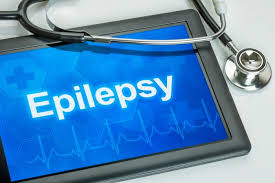- Home
- Editorial
- News
- Practice Guidelines
- Anesthesiology Guidelines
- Cancer Guidelines
- Cardiac Sciences Guidelines
- Critical Care Guidelines
- Dentistry Guidelines
- Dermatology Guidelines
- Diabetes and Endo Guidelines
- Diagnostics Guidelines
- ENT Guidelines
- Featured Practice Guidelines
- Gastroenterology Guidelines
- Geriatrics Guidelines
- Medicine Guidelines
- Nephrology Guidelines
- Neurosciences Guidelines
- Obs and Gynae Guidelines
- Ophthalmology Guidelines
- Orthopaedics Guidelines
- Paediatrics Guidelines
- Psychiatry Guidelines
- Pulmonology Guidelines
- Radiology Guidelines
- Surgery Guidelines
- Urology Guidelines
New algorithmic predictions of epileptic seizures improve patient lives

Computer scientists and mathematicians at the CEU Cardenal Herrera University in Valencia have developed a prediction model that can warn epileptic sufferers of an upcoming seizure with 20 minutes notice.
Being able to predict the onset of a debilitating seizure would significantly improve the quality of life of epileptics. With this goal, scientists from around the world competed in the American Epilepsy Society Seizure Prediction Challenge in 2014. A team from the Universidad Cardenal Herrera CEU (CEU-UCH) reached third place overall, winning them an invitation to the Society’s annual meeting in Seattle. Their prediction model has recently been published in the article Crowdsourcing reproducible seizure forecasting in human and canine epilepsy in the OUP’s Brain.
CEU-UCH researchers Juan Pardo, Javier Muñoz, Francisco Zamora and Paloma Botella developed an algorithm able to interpret the relevant data and predict a seizure up to 20 minutes before it occurs, giving the patient time to take their medication and nip it in the bud. Their model came third out of 502 submissions.
The idea is that a portable device like a mobile phone or a smartwatch reads signals sent from a microchip implanted in the patient’s brain, interpreting the data according to the researchers’ prize-winning algorithm and warning the patient of an upcoming seizure. The benefits of this set-up are two-fold: not only would epilepsy sufferers only have to take their medication in the event of a predicted seizure and not constantly throughout the day, mitigating any adverse effects, but they would also be able to reclaim a convincing semblance of a normal life, only avoiding ‘high-risk’ activities like driving or swimming until the risk of their having a seizure had passed.
Talking to the University back in 2014, Juan Pardo, director of the Department of Physical Sciences, Mathematics and Computing, said that “we are not doctors, but we are experts in massive data processing”, known today as Big Data. “This work shows how computer scientists and mathematicians are needed in many fields to help solve pressing issues, in this instance in neuroscience”.
The data in question was released as part of the competition, and comprised datasets of intracranial EEG recordings from canine and human epilepsy sufferers.

Disclaimer: This site is primarily intended for healthcare professionals. Any content/information on this website does not replace the advice of medical and/or health professionals and should not be construed as medical/diagnostic advice/endorsement or prescription. Use of this site is subject to our terms of use, privacy policy, advertisement policy. © 2020 Minerva Medical Treatment Pvt Ltd